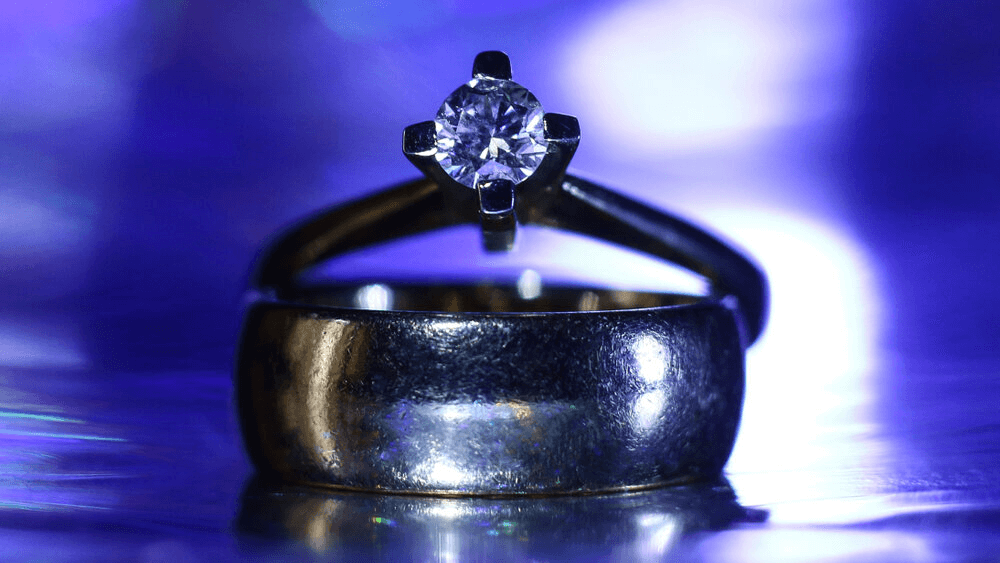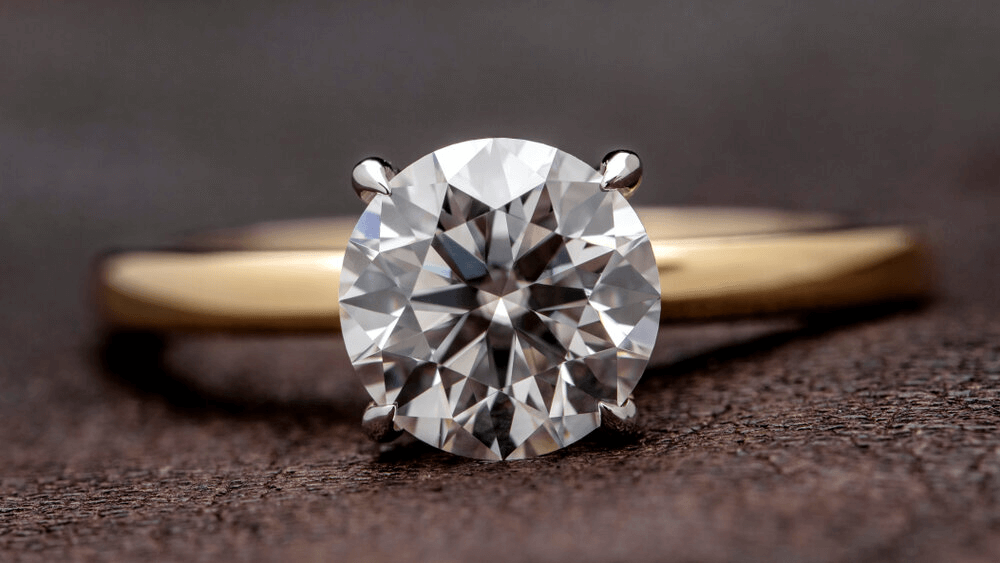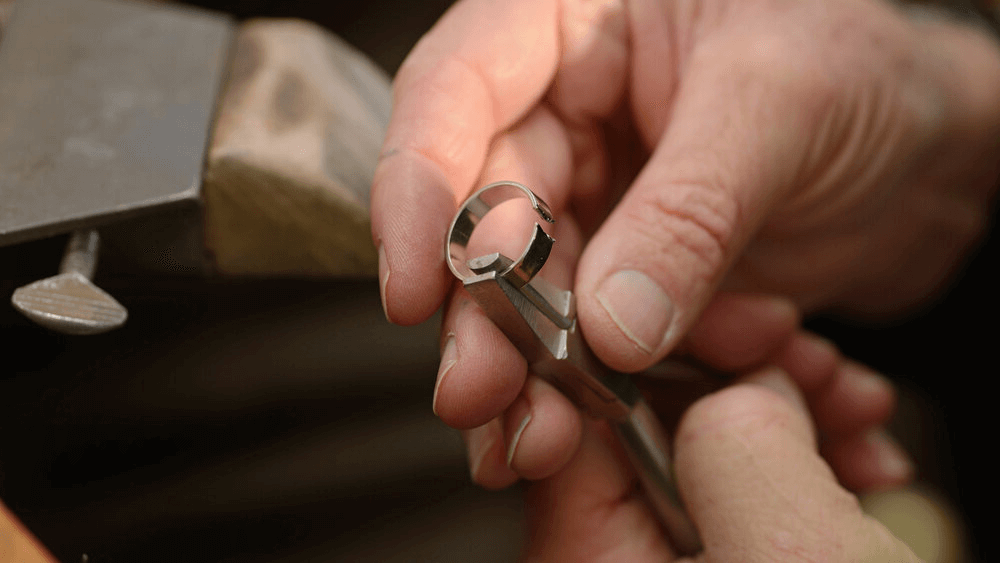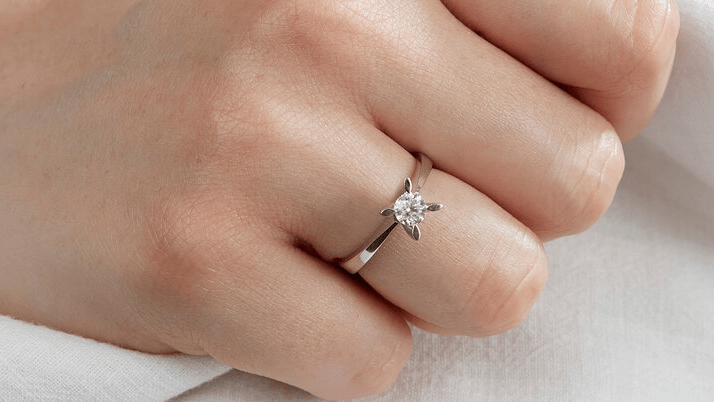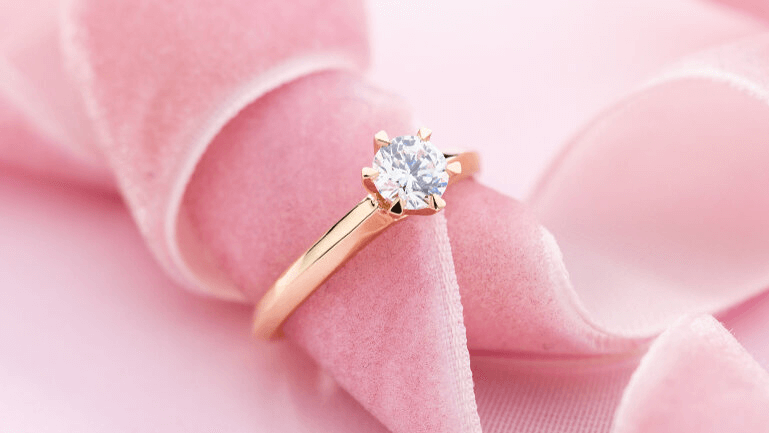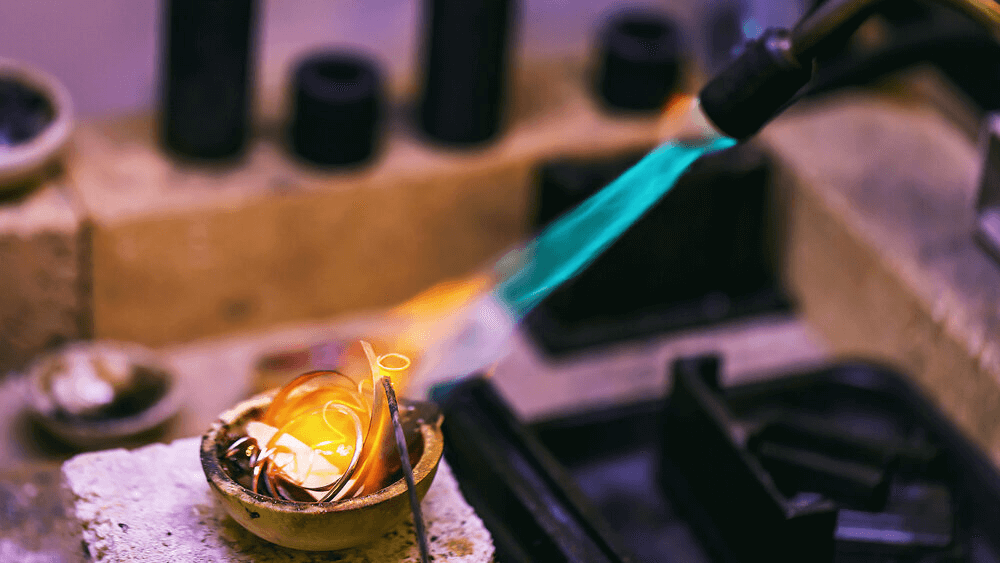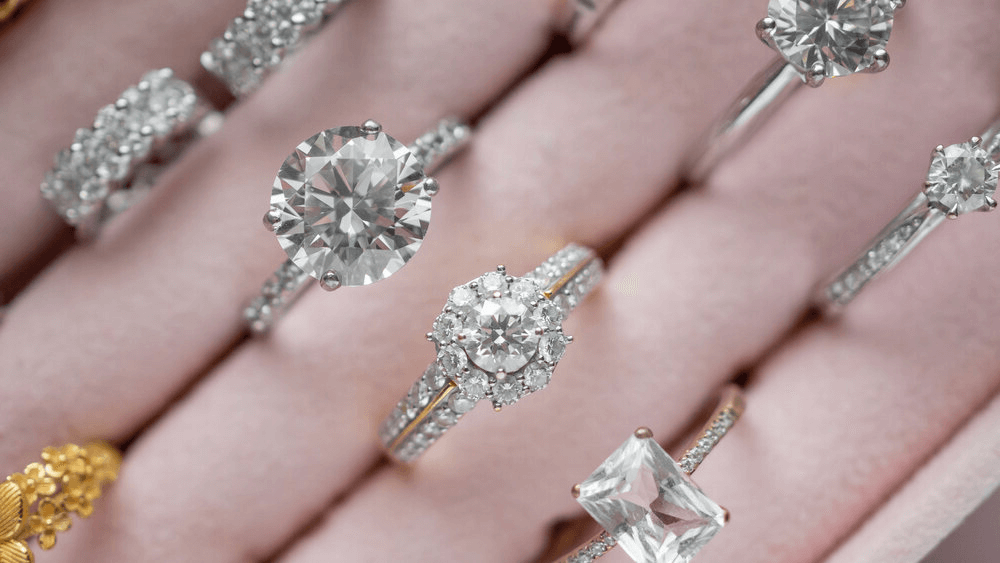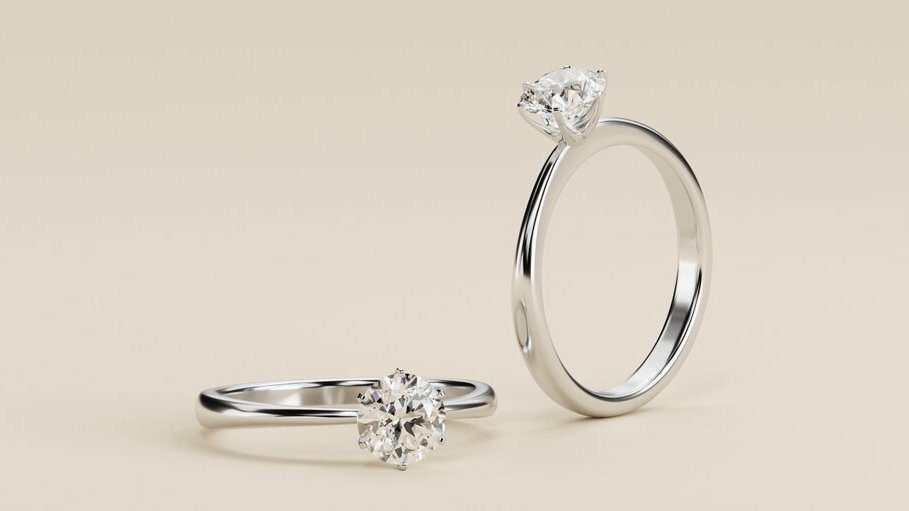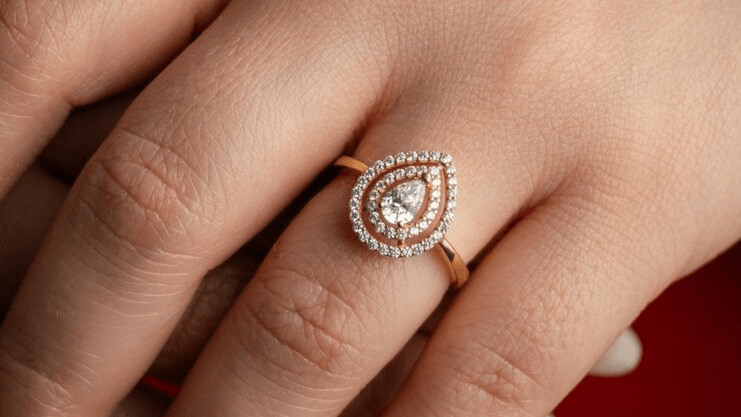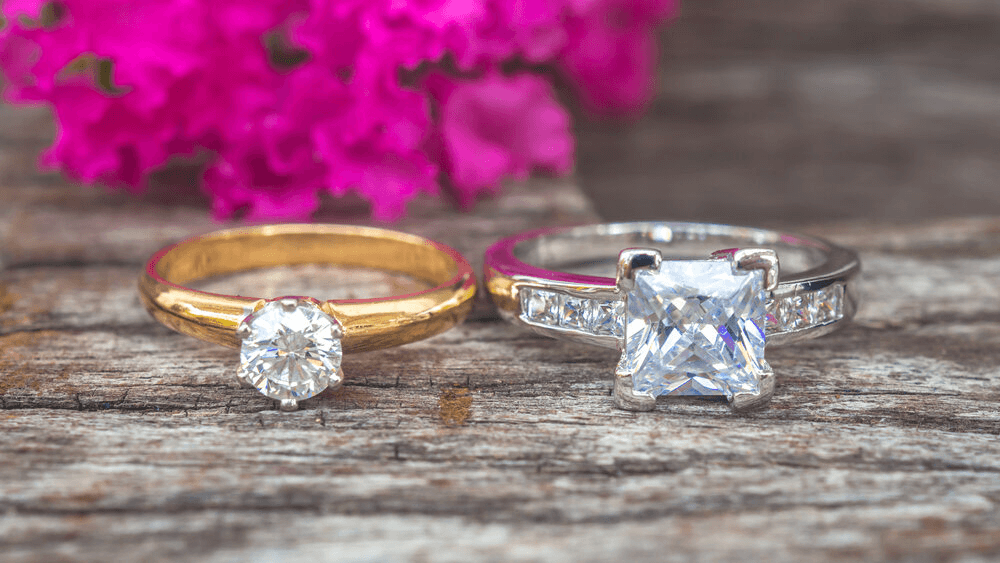24K Gold Engagement Rings: Luxurious or Liability?

By Gary A.

Edited by Olivia H.
Published Nov 12, 2021
Edited on Dec 18, 2024
With its unmistakable rich hue and allure, 24K gold engagement rings offer a glimpse into the purity of gold, but there’s much more to consider when selecting the perfect symbol of love.

- 7 Quick Tips for 24K Gold Diamond Engagement Ring Selection
- Introduction
- 24K Gold: The Basics
- 24K Gold Engagement Rings: Why It’s So Hard to Find
- 24k Gold vs 22k Gold
- Our Expert Take
- 7 FAQs
Before we dive deeper into the specifics, here are some practical tips to help guide your decision-making process:
7 Quick Tips for 24K Gold Diamond Engagement Ring Selection
- Tip 1: Understanding 24K Gold Characteristics: Recognize that 24K gold, being 99.9% pure, is the softest form of gold. It’s more prone to bending and scratches, which is a crucial consideration for engagement rings.
- Tip 2: Considering Durability in Design: Due to the soft nature of 24K gold, opt for designs that minimize the risk of deformation. Simple, less intricate designs are often more durable and practical for daily wear.
- Tip 3: Assessing Diamond Setting Security: Given the softness of 24K gold, ensure that the diamond setting is secure. Bezel settings can be a more reliable choice compared to prong settings in this context.
- Tip 4: Balancing Aesthetics and Practicality: While 24K gold offers a unique and rich appearance, balance this with the practical aspects of everyday wear. Consider the lifestyle and activities of the wearer.
- Tip 5: Verifying Gold Purity and Authenticity: Look for hallmarks or certifications that confirm the purity of the gold. Authentic 24K gold should be marked appropriately.
- Tip 6: Choosing the Right Diamond Quality: Focus on the 4Cs (Cut, Color, Clarity, Carat) for the diamond. A high-quality diamond can complement the pure gold and add to the ring’s overall value.
- Tip 7: Budget Considerations: Be aware that 24K gold is typically more expensive due to its high purity. Plan your budget accordingly, considering both the gold and the diamond.
Now that you’ve got these practical tips, use Jeweler AI below to find the perfect engagement ring that suits your style and budget:
Introduction
It’s not hard to figure out why gold has been so sought-after across so many centuries. More than any other precious metal, its yellow hue is so bright and lustrous that it almost appears to glow in your hand. Beyond its global monetary value, gold holds a cultural and emotional significance that makes it the obvious choice for fine jewelry and, in particular, bridal pieces.
While platinum is typically much more straightforward, anyone shopping for gold jewelry will want to understand this precious metal in terms of karats. And, if you’ve already started browsing rings online, you’ve no doubt come across the phrases ‘9k gold’, ’14k gold’ and ‘18k gold’ already – but it’s pretty unlikely you’ve seen anything labelled as 24k gold.
The purest of all, 24k gold is pretty fascinating – but not in the way you’re probably expecting it to be.
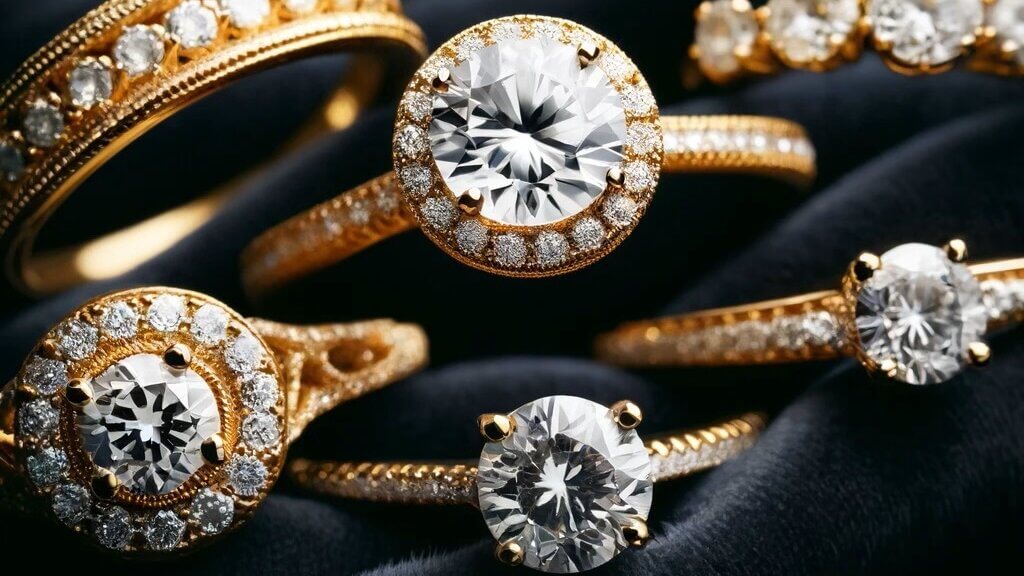
24K Gold: The Basics
Put simply, 24k gold is pure gold.
Pure gold features a distinctly bright yellow hue – far brighter than the gold jewelry you will be used to seeing. It is also soft, with a rating of 2.5 on the MOHs scale of hardness (for reference, that’s the same grade given to fingernail), meaning that it is very easily scratched, dented, and bent.
In order to make it harder, pure gold is alloyed with other, strengthening metals like copper, nickel, and platinum. There is, however, no single way of alloying gold; it can be combined with only a small amount of alloy, or the final product can contain significantly more alloy than gold.
For this reason, gold content is represented in karats, with one karat representing 1/24th of the entire piece of gold. Pure gold features 24/24 parts gold, while 18k gold, for instance, features 18/24 parts gold.
Alloying gold alters its hue and intensity – a little like diluting a colored liquid with water – which means that 24k gold is valued for its stunning, luminescent quality…
24K Gold Appearance
Pure gold features a deep, yellow color and an intensely vivid shine that means it cannot be mistaken for any other precious metal.
There’s no denying that 24k gold is beautiful. That said, however, many collectors of fine jewelry prefer the slightly softer hue of 18k gold, and find that it appears more natural and subtle against the skin. Alloying the gold brings it down to a more versatile tone, that sits better alongside clothing – making it easier to wear each and every day.
So, yes, 24k gold is both brighter and purer – but it’s always the wrong choice, no matter how attached you are to its fiery warmth…
24K Gold Engagement Rings: Why It’s So Hard to Find
What could be more romantic than presenting your future bride with a ring made from nothing but natural diamond and pure gold? As it turns out, there are a lot of options that will prove way more romantic – and practical – than 24k.
The Practicality of 24K Jewelry
You can get 24K pieces, but this is rare and, for bridal jewelry, never advisable.
The chances of you walking into a jewelry store anywhere in the US and finding 24k jewelry on display are slim to none – and particularly slim in the case of engagement rings and wedding bands.
24k gold jewelry holds cultural significance in some parts of the world, but, again, not for pieces that are intended to be worn regularly for many decades.
24K Gold Daily Wear
The natural softness and pliability of pure gold makes it a very poor choice for any item of jewelry that will be worn more than once in a blue moon.
Not only is pure gold soft and vulnerable to scratching and warping, it’s also incredibly valuable.
As a result, if you were to find an engagement ring made out of pure gold – not that you would – then your investment would be at constant risk, as well as the emotional significance of the ring.
Why You Can’t Find 24 Karat Rose Gold
Rose gold is not a naturally-occurring substance. It is a combination of gold with copper and, occasionally, other alloys like silver.
It is possible to create 22 karat rose gold, although the distinctive pink of this metal is much more subdued when the gold content remains so high.
This is why rose gold’s color can vary so much from ring to ring. While most shoppers are looking for that characteristically romantic blush, as in this Three Stone Rose Gold Engagement Ring, others prefer a much deeper and more vivid hue, closer to red than pink.
The exact color of rose gold depends on the levels of alloy used, and on its age, as the copper content does cause a desirable patina that causes it to appear darker as the years pass.
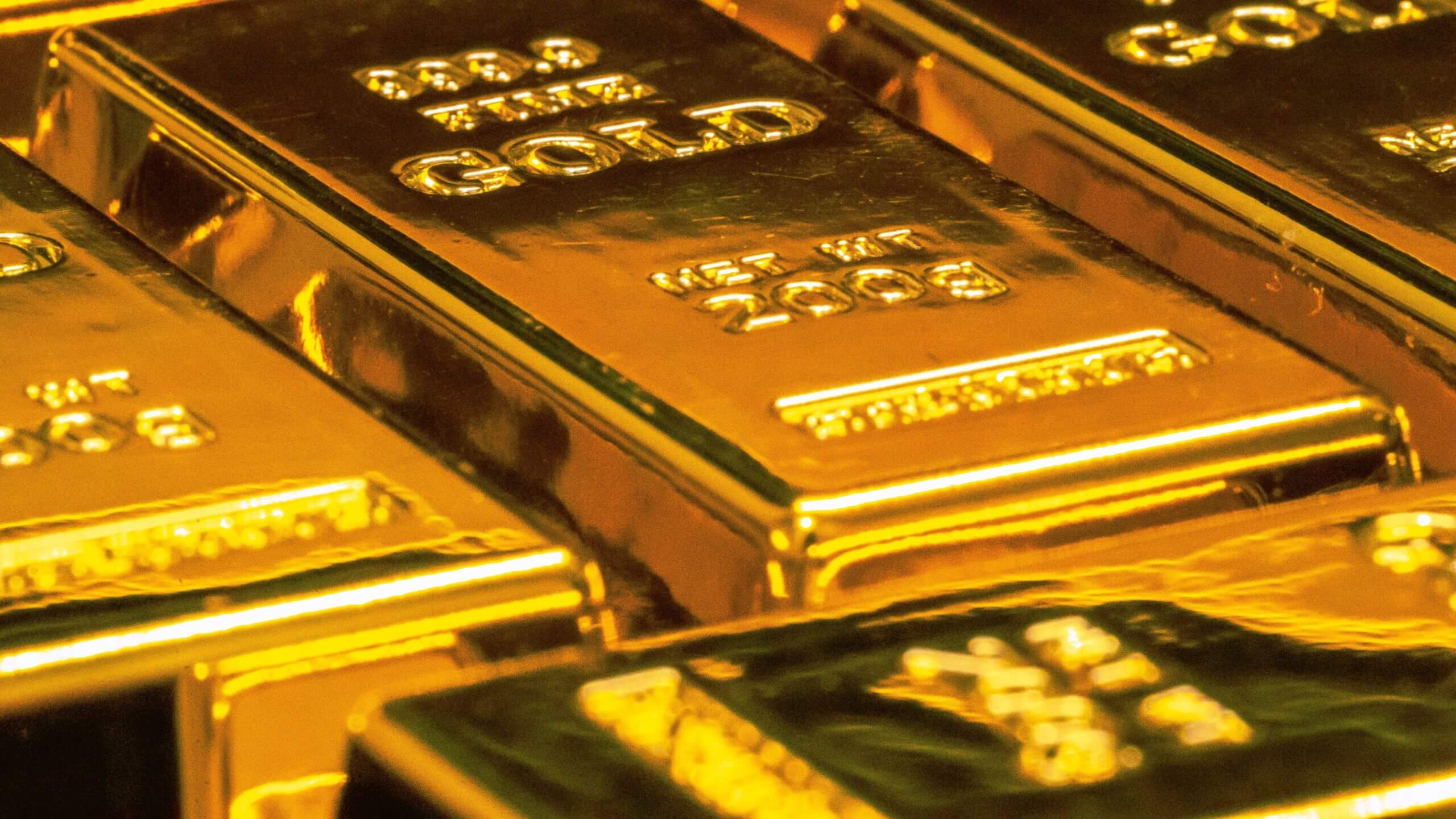
24k Gold vs 22k Gold
While 24k gold is the most valuable, 22k gold is stronger – although still not ideal for bridal jewelry.
22k gold is around 91% pure gold, and 9% alloy. Its high concentration of gold makes it a far richer and more vibrant shade of yellow than, say, 18k or 14k gold – and, if these three types of gold were placed side by side, you would notice a subtle though definitive difference.
A 22 karat gold engagement ring would still be a poor choice. While it is strengthened by alloy, it simply does not contain enough to withstand the wear and tear that an engagement ring or wedding band undergoes each day. As a result, they remain pretty uncommon sights in jewelry stores.
Our Expert Take
18k and 14k will be your best options if you’re looking for the warmth of color you already associate with gold jewelry, but the durability your diamond calls for.
Most people, on hearing that pure gold needs the strength of alloy to work for jewelry, will initially dip down as far as, say, 22K. Even then, however, these rings still possess too many of gold’s negative qualities – namely, its softness and vulnerability – and, for jewelry intended to be worn every day for the rest of your lives, it’s still a poor choice.
18 karat gold is a great place to start looking – but that’s not to say you won’t end up preferring the softer hue of a 14k gold, particularly when you take price and durability into consideration.
Forget about pure gold, and any of the prestige the phrase might carry. A beautifully designed gold ring is far more valuable to you and your bride than a block of soft and malleable 24k gold.
7 FAQs
- Q: What Makes 24K Gold Special for Engagement Rings?
- A: 24K gold is 99.9% pure gold, making it the most refined form of gold available. Its unique, intense hue and rarity make it a special choice for engagement rings.
- Q: Is 24K Gold Suitable for Daily Wear?
- A: 24K gold is very soft and prone to scratches and deformation, making it less suitable for rings intended for daily wear.
- Q: Can 24K Gold Engagement Rings Hold Diamonds Securely?
- A: Due to its softness, 24K gold might not be the best choice for securing diamonds. It’s recommended to choose a stronger setting or a lower karat gold for diamond rings.
- Q: How Do I Care for My 24K Gold Engagement Ring?
- A: 24K gold rings should be gently cleaned with a soft cloth and stored separately to avoid scratches. Avoid exposure to harsh chemicals and physical activities that could deform the ring.
- Q: Why Are Some 24K Gold Rings More Expensive Than Others?
- A: The price of 24K gold rings can vary due to factors like design complexity, craftsmanship, and additional gemstones like diamonds.
- Q: How Do I Know if My Diamond is Real in a 24K Gold Ring?
- A: Ensure the diamond comes with a certification from a reputable organization like GIA or AGS. You can also perform simple tests like the fog test or seek professional verification.
- Q: What Should I Look for When Buying a 24K Gold Engagement Ring?
- Look for hallmarks indicating purity, assess the quality of craftsmanship, and ensure the design suits the wearer’s lifestyle and preferences. Consider the practical aspects of wearing 24K gold daily.
Transform your proposal with Jeweler AI. Experience the pinnacle of elegance with a bespoke 24K gold and diamond ring tailored just for you.
FOLLOW-UP GUIDE SERIES

